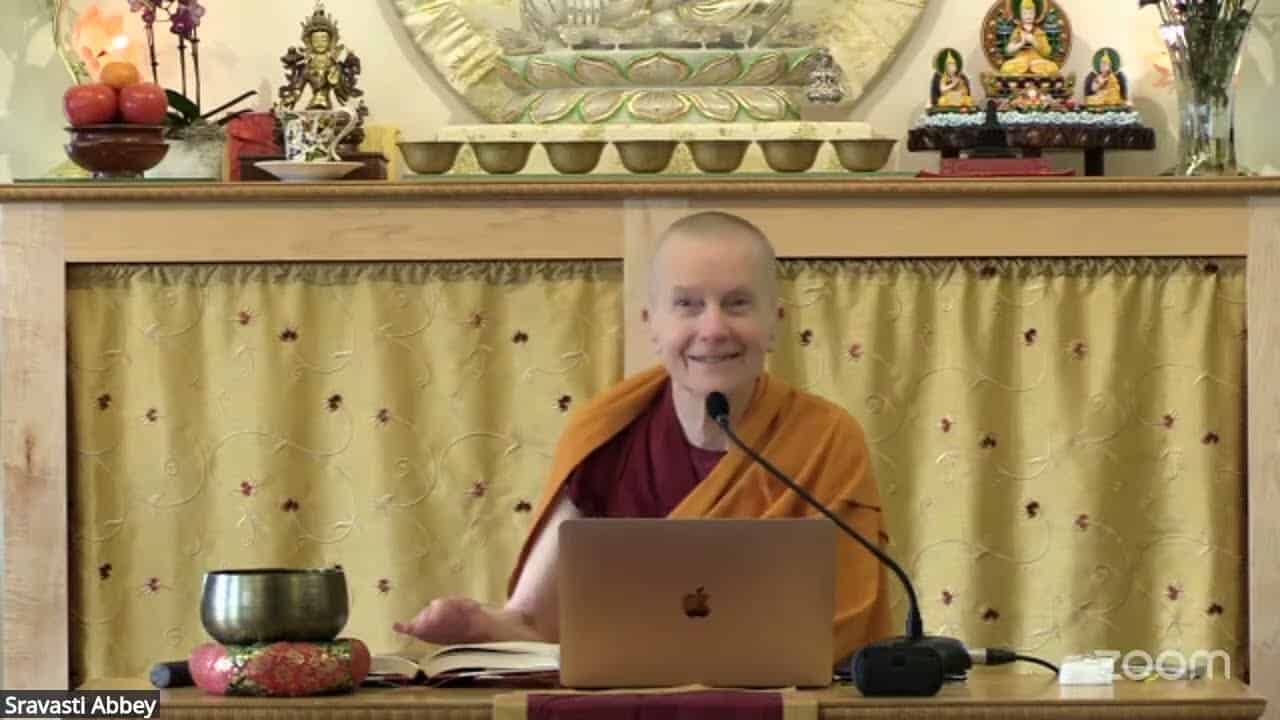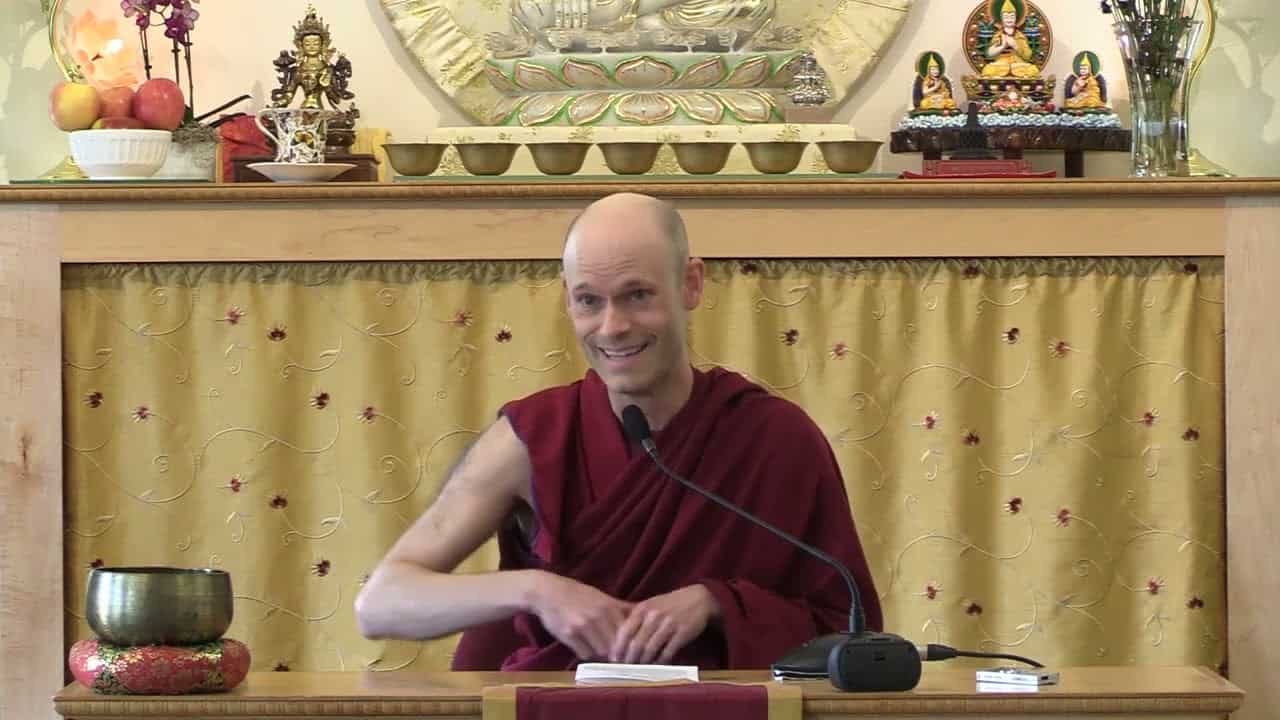Benefits on meditating on the Buddha
53 Following in the Buddha's Footsteps
Part of an ongoing series of teachings based on the book Following in the Buddha's Footsteps, the fourth volume in The Library of Wisdom and Compassion series by His Holiness the Dalai Lama and Venerable Thubten Chodron.
- Image of the Buddha as the object of meditation
- Meditating on breath
- Tantra and serenity
- Importance of thought training to handle distractions
- Few other objects for developing serenity
- Guidelines on choosing a meditation object
53 Benefits of Meditating on the Buddha (download)
Contemplation points
- Reflect on the benefits of developing concentration on the image of the Buddha: it deepens your refuge in the Three Jewels, brings mindfulness of the Buddha’s excellent qualities, and plants imprints on your mindstream to be able to think of the Buddha when you die.
- Review the tips shared in the teaching for meditating on the Buddha, i.e. how to prevent laxity, how to prevent restlessness, what to do if distortions in the image appear, what to do when the image fades or is unclear, etc?
- After looking at a statue or painting of the Buddha, lower your eyes and visualize the Buddha with his body of golden light in the space in front of you. Go over the details and then focus on the Buddha’s body as a whole, being satisfied with however clear the image may be. When the image becomes fuzzy, renew the details again and then focus again on the whole image. If distractions arise, renew your mindfulness of the Buddha. If lethargy arises, apply the antidotes to energize the mind.
- What are the benefits and limitations of meditating on the breath?
- Venerable Chodron talks about learning how to be a “balanced human being” by applying antidotes to our thoughts, transforming those thoughts using the thought training teachings so that our minds are calm and clear enough to make progress on the spiritual path. Make some examples of this from your own life. How has transforming your thoughts been beneficial in your own life and practice? What are situations in which you can employ thought training in areas of your life you might not be now? How might doing so be beneficial for those situations?
- With so many meditation objects, what are the recommendations for choosing a meditation object that most benefits our mind?
Venerable Thubten Chodron
Venerable Chodron emphasizes the practical application of Buddha’s teachings in our daily lives and is especially skilled at explaining them in ways easily understood and practiced by Westerners. She is well known for her warm, humorous, and lucid teachings. She was ordained as a Buddhist nun in 1977 by Kyabje Ling Rinpoche in Dharamsala, India, and in 1986 she received bhikshuni (full) ordination in Taiwan. Read her full bio.


